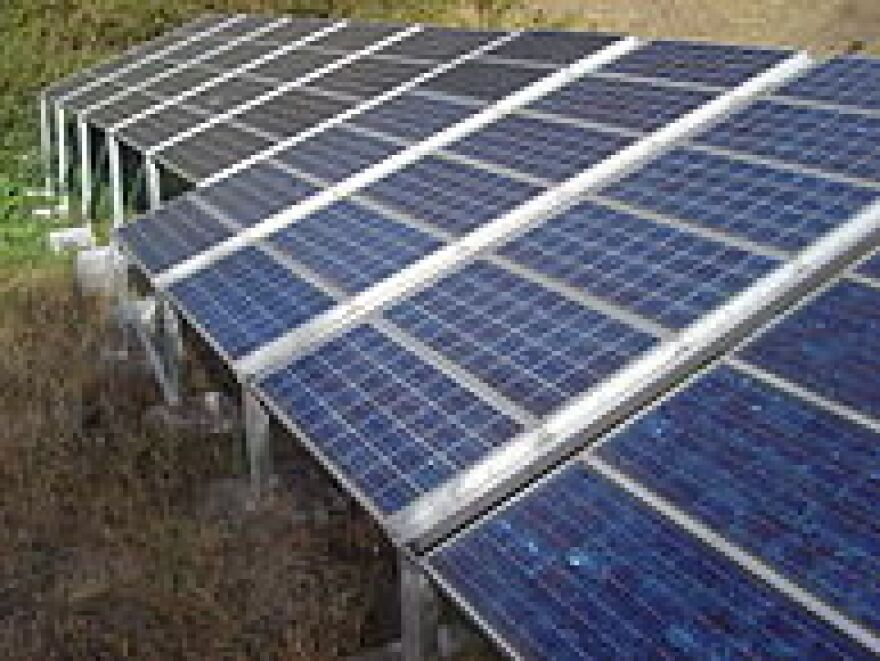A partnership between the local utility and state and federal government will build Kentucky’s largest solar array at Fort Campbell. The solar array will cover about 20 acres at the army base, and will produce five megawatts of power.
Kenya Stump, Kentucky’s assistant director of the Division of Renewable Energy, said five megawatts is enough energy to power about 500 homes.
The array will sit on an abandoned landfill, Stump said.
“The landfill itself wasn’t in a position to be utilized since it was already capped and just sitting there, so they had space,” Stump said. “So the array actually fits perfectly with the abandoned landfill.”
She said it’s only one example of using brownfields sites to spur renewable energy development, which is an initiative the Environmental Protection Agency has been working on for a while. And in Kentucky, it’s becoming more feasible.
“I think as the price of solar is dropping, I think we’re starting to see a little bit more demand from the consumers to utilize solar resources,” Stump said.
But Fort Campbell Energy Manager James McCoy Jr. said saving money wasn’t the main reason for the project.
“This project essentially saves the taxpayers over the (25-year) life cycle about a million bucks. It’s not a huge amount of money,” he said. “It’s more about reducing the carbon footprint. It’s more about the energy security and so forth more so than the actual dollars it saves.”
Like the new Fort Campbell project, most of Kentucky’s solar projects are in Western and Southern Kentucky. That’s because those areas get power from cooperatives working with the Tennessee Valley Authority, which has a generous incentive program for renewable energy.
Most of Kentucky—including Louisville—falls under net metering. This means homes have one electric meter, and if you have solar panels, your meter can run backward. If you produce more energy than you use, you receive a credit on your electric bill.
But TVA’s program allows homes to have two meters. Ratepayers with solar panels receive a check for the energy they produce, and then get billed for the electricity they use. TVA pays a premium for the renewable energy, which makes it economically attractive to install the panels.
Fort Campbell’s installation isn’t the only one on a Kentucky military base. Fort Knox already has a two megawatt solar array. Last year, President Obama set a goal of having 20 percent of the federal government’s energy come from renewable sources by 2020, and these projects will contribute to that. Stump said the military is fast becoming a leader in the field.
“We’re seeing a lot of our military affairs and military installations kind of taking the lead on renewable projects,” she said. “And they really view it as energy security.”
Planning for the project began in 2013 and the array is expected to be functional by the end of next year.







